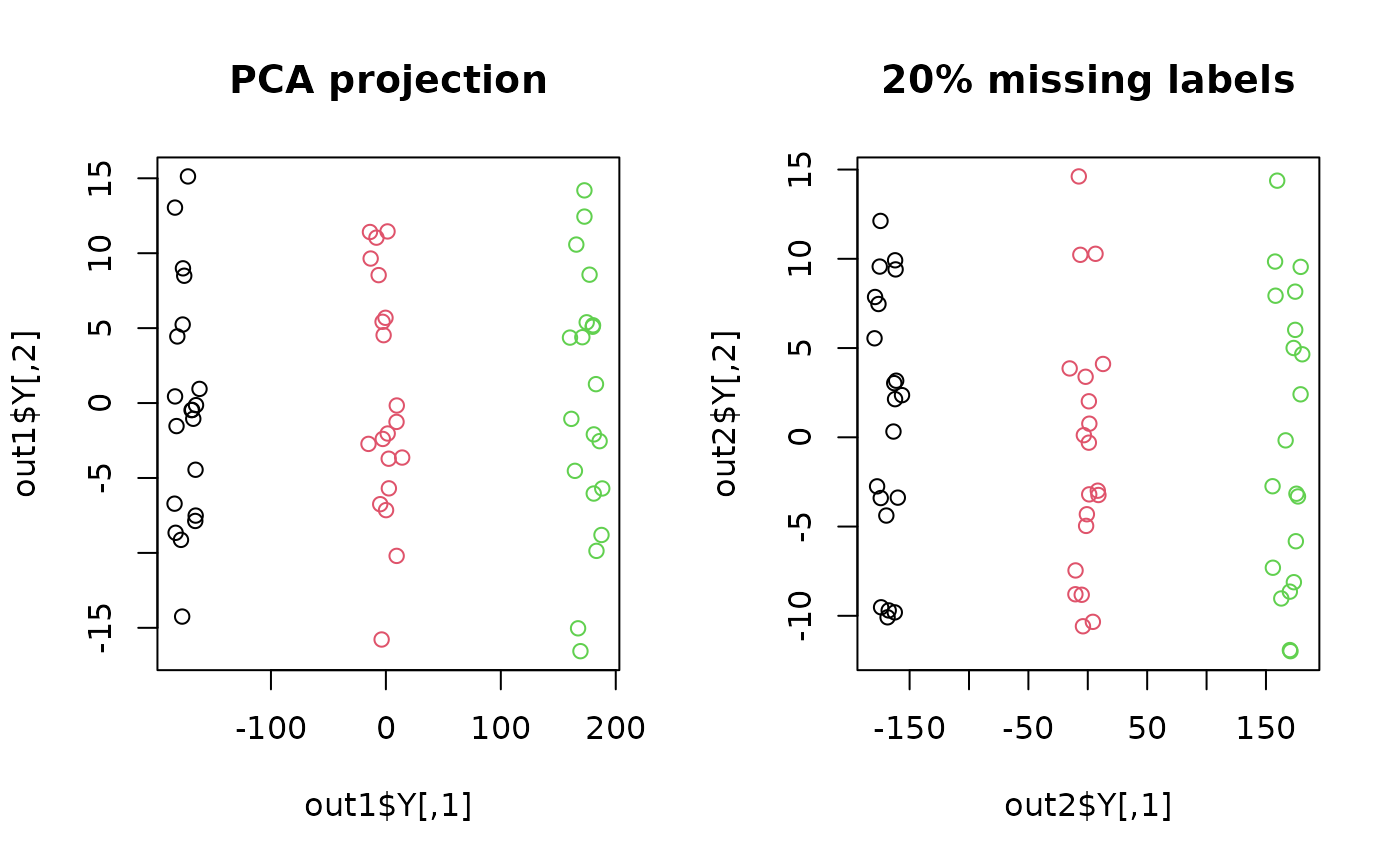Maximum Margin Projection (MMP) is a supervised linear method that maximizes the margin between positive and negative examples at each local neighborhood based on same- and different-class neighborhoods depending on class labels.
Arguments
- X
an \((n\times p)\) matrix or data frame whose rows are observations.
- label
a length-\(n\) vector of data class labels.
- ndim
an integer-valued target dimension.
- preprocess
an additional option for preprocessing the data. Default is "center". See also
aux.preprocessfor more details.- numk
the number of neighboring points.
- alpha
balancing parameter in \([0,1]\).
- gamma
weight for same-label data points with large magnitude.
Value
a named list containing
- Y
an \((n\times ndim)\) matrix whose rows are embedded observations.
- trfinfo
a list containing information for out-of-sample prediction.
- projection
a \((p\times ndim)\) whose columns are basis for projection.
References
Xiaofei He, Deng Cai, Jiawei Han (2008). “Learning a Maximum Margin Subspace for Image Retrieval.” IEEE Transactions on Knowledge and Data Engineering, 20(2), 189--201.
Examples
## generate data of 3 types with clear difference
dt1 = aux.gensamples(n=20)-100
dt2 = aux.gensamples(n=20)
dt3 = aux.gensamples(n=20)+100
## merge the data and create a label correspondingly
X = rbind(dt1,dt2,dt3)
label = rep(1:3, each=20)
## copy a label and let 20% of elements be missing
nlabel = length(label)
nmissing = round(nlabel*0.20)
label_missing = label
label_missing[sample(1:nlabel, nmissing)]=NA
## compare with PCA case for full-label case
## for missing label case from MMP computation
out1 = do.pca(X, ndim=2)
out2 = do.mmp(X, label_missing, numk=10)
## visualize
opar <- par(no.readonly=TRUE)
par(mfrow=c(1,2))
plot(out1$Y, col=label, main="PCA projection")
plot(out2$Y, col=label, main="20% missing labels")
 par(opar)
par(opar)